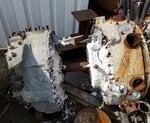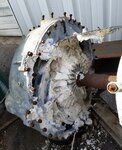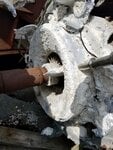Tony Kambic
Airman 1st Class
The B-26 Marauder with the R-2800-43 engines had a single stage two speed supercharger. I've spent at with mechanics at American Aero who service B-17s and B-24s, and both aircraft have turbochargers. Since these now-flying aircraft are for rides and shows only, they never go over 10,000 so no true need for supercharging. For the B-17s, they leave the turbochargers in place since they also act as a muffler as without the engine would be very loud. Their waste gates are wide open. I was told though that the B-24 does engage the turbocharger for power on takeoff as it is required due to the different wing loading than the B-17.
Tony
Tony



